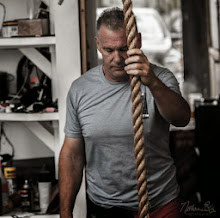Leave it to me to forget about writing while writing.
I was asked to write an article about "sway" back in horses for Natural Horse Magazine. Randi the publisher is a great editor and is very patient with my lack of writing education.
I approached the article from the soft tissue perspective and what I called "saggy" back. There is a discussion of the coupled spinal movements in the article. It also covers some physiology and techniques for working with this condition.
The article should be in the Sept. issue.
Tuesday, August 5, 2008
More Spinal Movement musing
One of the great things about Dr. Gracovetsky's talk is that it answered some questions and posed many more, at least for me. The information presented was at a fairly high level and not directly useable in a body therapy practice.
I want to write a little about what I'm doing with it. There will be more on the website www.animalsi.com, as I develop it.
The spine can be modeled as a semi rigid column--remember that the orientation and adaptation of the human spine is not identical to a quadruped's and a dog is differet than a horse--as such it is subject to certain rules of coupled motion. The motions that the spine can do, are: Side bend, flex/extend and axial rotation. If any two of these motions occurs, the third is introduced or coupled with them. In other words, if a horse is landing after a jump and turning towards the next one, its spine is in extension and side bending, therefore it will also axially rotate. You can see this in some of the dramatic pictures of Grand Prix jumpers.
One of the things that I got confused about in my evolution of movement was the idea that fish only had lateral side bending as their main movement, without the flex/extend and axial rotation. Dr. Gracovetsky cleared this up for me in his talk.
Look for more about this on the website www.animalsi.com in the free article and video section.
I want to write a little about what I'm doing with it. There will be more on the website www.animalsi.com, as I develop it.
The spine can be modeled as a semi rigid column--remember that the orientation and adaptation of the human spine is not identical to a quadruped's and a dog is differet than a horse--as such it is subject to certain rules of coupled motion. The motions that the spine can do, are: Side bend, flex/extend and axial rotation. If any two of these motions occurs, the third is introduced or coupled with them. In other words, if a horse is landing after a jump and turning towards the next one, its spine is in extension and side bending, therefore it will also axially rotate. You can see this in some of the dramatic pictures of Grand Prix jumpers.
One of the things that I got confused about in my evolution of movement was the idea that fish only had lateral side bending as their main movement, without the flex/extend and axial rotation. Dr. Gracovetsky cleared this up for me in his talk.
Look for more about this on the website www.animalsi.com in the free article and video section.
Saturday, August 2, 2008
So little time...
It seems like it takes me more time than I like to write to this blog. But, I am very busy, all of my private practices are very busy this summer. We've started the Equine Myofascial Release DVD, videoing. I'm hoping it will be available by December. I am reviewing new books for the online fascial anatomy course. AND we put out a new website last week, www.animalsi.com, give it a look and let me know what you think.
I went to a talk by Serge Gracovetsky last night. He's the author of "The Spinal Engine", the talk was supposed to be on the evolution of spinal movements from Fish to Humans, but it really wasn't. Even so, it was a wonderful talk by a very funny Nuclear Physicist, is that possible? I learned a lot, had a lot that I have been thinking about confirmed and had many new ideas sparked.
The Equinemyofascialrelease group on Yahoo has been pretty active. We've had one person who's been realy sparking things for us with a discussion of her horse. I'm working on an animation of some of the concepts I've been talking about on the group which will be on the new website.
That's all for now.
I went to a talk by Serge Gracovetsky last night. He's the author of "The Spinal Engine", the talk was supposed to be on the evolution of spinal movements from Fish to Humans, but it really wasn't. Even so, it was a wonderful talk by a very funny Nuclear Physicist, is that possible? I learned a lot, had a lot that I have been thinking about confirmed and had many new ideas sparked.
The Equinemyofascialrelease group on Yahoo has been pretty active. We've had one person who's been realy sparking things for us with a discussion of her horse. I'm working on an animation of some of the concepts I've been talking about on the group which will be on the new website.
That's all for now.
Subscribe to:
Comments (Atom)



